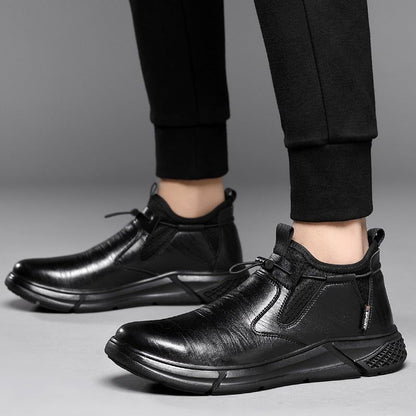
When choosing footwear, choosing safety shoes and regular shoes is not just about style but also safety. This informative blog will outline the key differences between these two types of shoes. Whether you're an experienced professional or simply curious, we invite you to explore the important distinctions that can significantly impact the safety of your feet.
The Importance of Safety Footwear
Proper safety footwear is critical in protecting workers from potential hazards in the workplace. OSHA reports that about 10% of all workplace accidents are related to foot injuries, making safety shoes a must-have. These specialized shoes are specifically designed to provide protection against a variety of potential dangers, such as:
- Falling Objects: Engineered for protection, safety shoes are designed to shield feet from falling objects.
- Pointed Object Injuries: These objects protect against injuries caused by sharp items on the ground.
- Slips, Trips, and Falls: Wearing safety footwear can effectively reduce the likelihood of accidents caused by slipping, tripping, or falling.
- Electrical Hazards: These products provide safety in areas with electrical dangers.
- Chemical Exposure: It is crucial to wear safety shoes when there is a possibility of being exposed to harmful chemicals.
Understanding Safety Shoes
Safety shoes provide comprehensive protection in hazardous workplaces, incorporating steel or composite toe caps, puncture-resistant and slip-resistant soles, and electrical hazard protection.
Contrast with Ordinary Shoes
Ordinary shoes are designed to offer a different level of protection than safety shoes. They may be constructed from less durable materials and lack specialized hazard protection features.
Critical Distinctions Between Safety Shoes and Ordinary Shoes:
- Materials: Safety shoes are made of sturdy steel, leather, and composites, whereas ordinary shoes often use less durable fabrics and synthetic materials.
- Features: Safety shoes have unique features like toe caps, puncture resistance, slip resistance, and electrical hazard protection, which are absent in regular shoes.
- Design: Safety shoes are specifically designed to protect against workplace hazards, while regular shoes do not provide the same level of protection.
When is it Appropriate to Wear Safety Shoes?
Safety shoes are necessary in any workplace with risks of foot injury, such as areas with falling objects, sharp ground hazards, slippery surfaces, electrical hazards, or chemical exposure.
Selecting the Appropriate Safety Footwear
Selecting the right safety shoes depends on the hazards, type of work, climate, comfort, and budget. For example, working in a hot environment may require shoes that keep feet cool.
Taking Care of Your Safety Shoes
Keeping your safety shoes well-maintained is crucial to ensure they provide the best possible protection. Here are some tips to take care of:
- Maintaining your shoes' cleanliness is crucial by using a mild soap and water solution regularly.
- It is best to refrain from subjecting your shoes to extreme hot or cold temperatures.
- It's essential to replace your safety shoes if they become damaged or worn out to ensure they provide adequate protection.
By following these guidelines, your safety shoes will provide protection for a safe and productive work environment. If you have any questions or need more information, please comment below.







